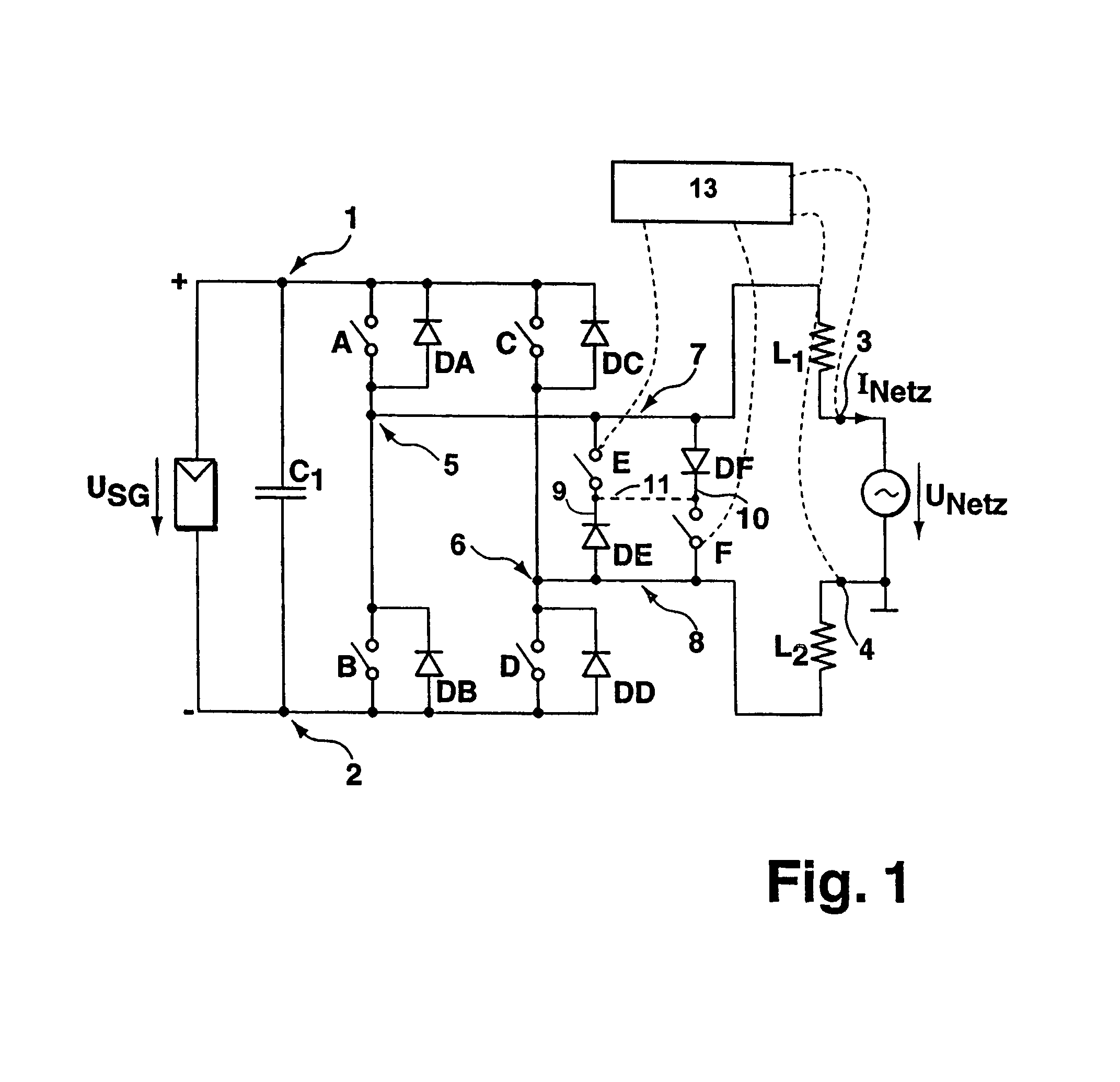DC/AC converter to convert direct electric voltage into alternating voltage or into alternating current
a technology of alternating voltage and converter, which is applied in the direction of ac-dc conversion, single network parallel feeding arrangement, electric variable regulation, etc., can solve the problems of poor emc behavior on the input side, lack of four-quadrant operation (reactive power capacity), or the entire or at least a large part of power transferred to the output, etc., to avoid drawbacks, better electromagnetic compatibility, and better efficiency
- Summary
- Abstract
- Description
- Claims
- Application Information
AI Technical Summary
Benefits of technology
Problems solved by technology
Method used
Image
Examples
Embodiment Construction
[0054]As in the DC / AC converter circuit set up described as the closest prior art with reference to FIG. 2, the DC / AC converter according to FIG. 1 is also provided with a parallel circuit comprising an energy intermediate storage C1, preferably in the form of a buffer capacitor, and a bridge circuit. The parallel circuit is connected between the DC voltage connection 1,2. As in the bridge circuit shown in FIG. 2, the bridge circuit is provided with four switch units A, B, C, D to which the rectifier diodes DA, DB, DC, DD are connected in parallel respectively. The difference relative to the prior-art topology according to FIG. 2 is the provision of two additional electric connecting paths 9, 10 between the connecting lines 7, 8 to tap the bridge voltage UBr at the connecting nodes 5,6. Located in each individual connecting paths 9, 10 is a switch E, F and a rectifier diode DE, DF respectively, which are switched relative to each other in an opposite conducting direction. All the ot...
PUM
 Login to View More
Login to View More Abstract
Description
Claims
Application Information
 Login to View More
Login to View More - R&D
- Intellectual Property
- Life Sciences
- Materials
- Tech Scout
- Unparalleled Data Quality
- Higher Quality Content
- 60% Fewer Hallucinations
Browse by: Latest US Patents, China's latest patents, Technical Efficacy Thesaurus, Application Domain, Technology Topic, Popular Technical Reports.
© 2025 PatSnap. All rights reserved.Legal|Privacy policy|Modern Slavery Act Transparency Statement|Sitemap|About US| Contact US: help@patsnap.com



